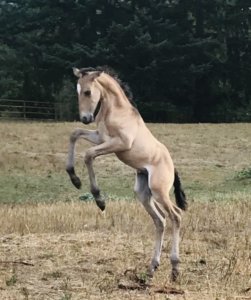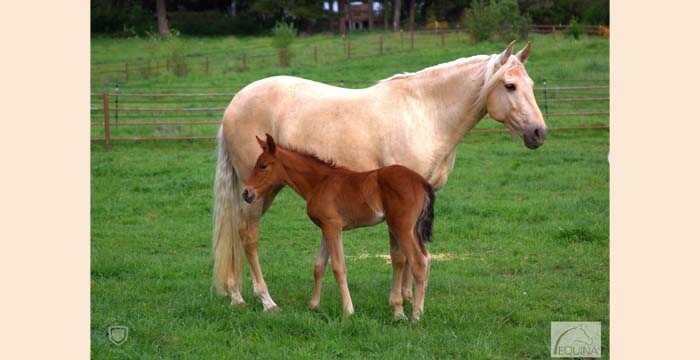
The holidays are over, which means breeding season will soon begin. We start breeding in February and typically wind down by July. Breeders focused on aged events or sales often want the advantage of an earlier foal. Those mares are bred in February and March.
In order to get the mares to cycle well early in the season they are put under lights starting in December. If an early foal is not important, breeders may choose to breed later in the spring or early summer. The main advantage to this is having a foal born during warmer weather may make it easier to manage, depending on the climate and facilities.
Is your broodmare breeding sound?
If you’re thinking of breeding your mare what should be considered prior to the endeavor? First, is the mare a good candidate?
The main factors are age, breeding history, and overall health. If there are questions regarding your mare, a breeding soundness exam is a good investment before moving forward. Your veterinarian can evaluate the overall health of the horse, examine the reproductive tract by palpation and ultrasound, and possibly do tests such as a uterine culture and cytology to ensure all is well.
Most mares are healthy and normal, but it is good to answer questions before planning insemination. This can save time and money.
Choosing Stallion and Method
When choosing a stallion, be aware of his breeding history. Some stallions are more fertile than others, so it’s good to know how many foals they have on the ground and by what means. The three main options are live cover, cooled transported semen, and frozen semen.
Live cover can be less costly as there is less need for veterinary involvement and the chances of conception are generally high. There is innate risk to both the mare and stallion for physical injury. The other issue is geography.
Shipped semen allows the mare owner to choose from stallions anywhere in the country and outside the country as well. Cooled transported semen is collected upon request and shipped same day or overnight. The advantage is it can lead to higher conception rates (50-65% chance of pregnancy per cycle) than frozen semen in some cases.
The collection and shipment of the semen must be timed in sync with the mare’s cycle. Frozen semen can be stored indefinitely on the mare’s end. This allows for insemination anytime, independent of outside factors. Frozen semen requires careful handling and very specific timing of insemination. Conception rates with frozen semen are statistically lower at 30-40% chance for pregnancy per cycle. It is good to review the stallion’s breeding contract before making the final decision to fully understand costs and parameters.
The Importance of Timing
When it’s time to breed the mare, we want her to enter into a good heat cycle. This cycle needs to accommodate shipment schedules if we are using cooled transported semen. The time of ovulation must be predicted properly for success with cooled, and especially frozen semen.
Mares’ heat cycles can be difficult to track so we typically use a simple protocol of hormonal therapy to bring them into heat and induce ovulation. This can eliminate costs variables.
After your mare is bred, your veterinarian will ultrasound her to check for pregnancy after about 14 days. If she is in foal, a second check is typically done around 25 days to check for a fetal heartbeat and normal development. It is also important to rule out twins during these exams.
We always hope to catch the mare on the first cycle. Sometimes it takes more than one attempt to get the mare pregnant. Three attempts at artificial insemination leads to about a 90% chance of pregnancy. If the mare is not pregnant after a few tries, the situation should be reevaluated from all angles.
Sometimes further diagnostics are indicated to look for problems in the mare. Even if the stallion is proven fertile, it can be helpful to switch stallions as incompatibility can exist between certain mares and stallions.
Breeding season is always fun and exciting as hopes and dreams lead to future foals and great horses. Understanding the process and knowing what to expect is the key to enjoying it.

Dr. Sara Perkins, DVM, graduated from the veterinary school at Washington State University in 2000 and completed an internship at Rood and Riddle in Lexington, Kentucky in 2001. After working with the equine internal medicine department at UC Davis in 2002 she went into private practice, opening Equine Medical Services of Rainier, WA in 2005. Sara partnered with EquinaVet in Germany in 2017 in order to make their nutritional supplements available to horses in the USA. Currently, Sara divides her time between veterinary practice, working for EquinaVet USA, riding dressage and cutting horses, and managing Waystation Farm where she breeds Lusitano horses. Visit www.equinemedservices.com to learn more.

